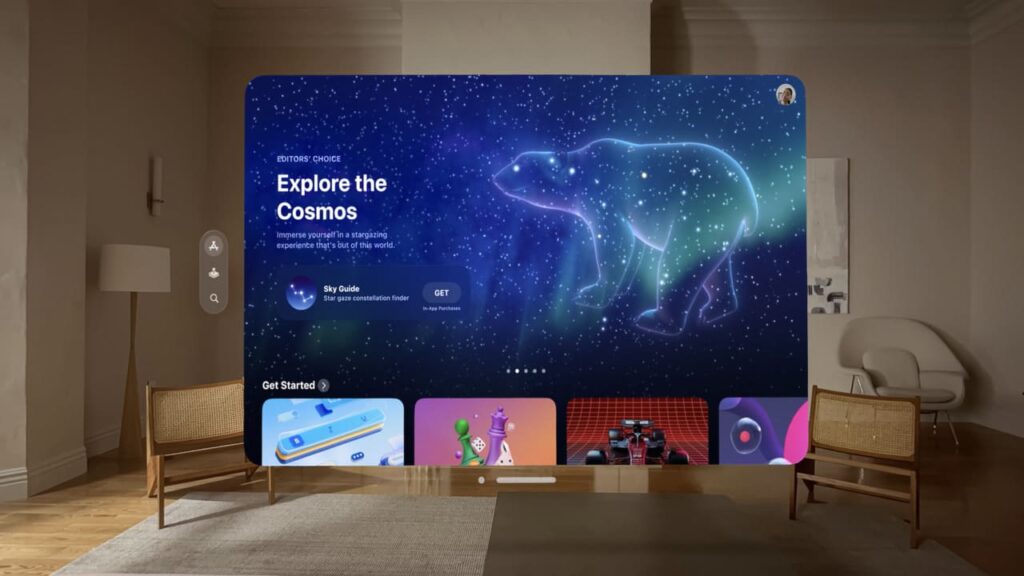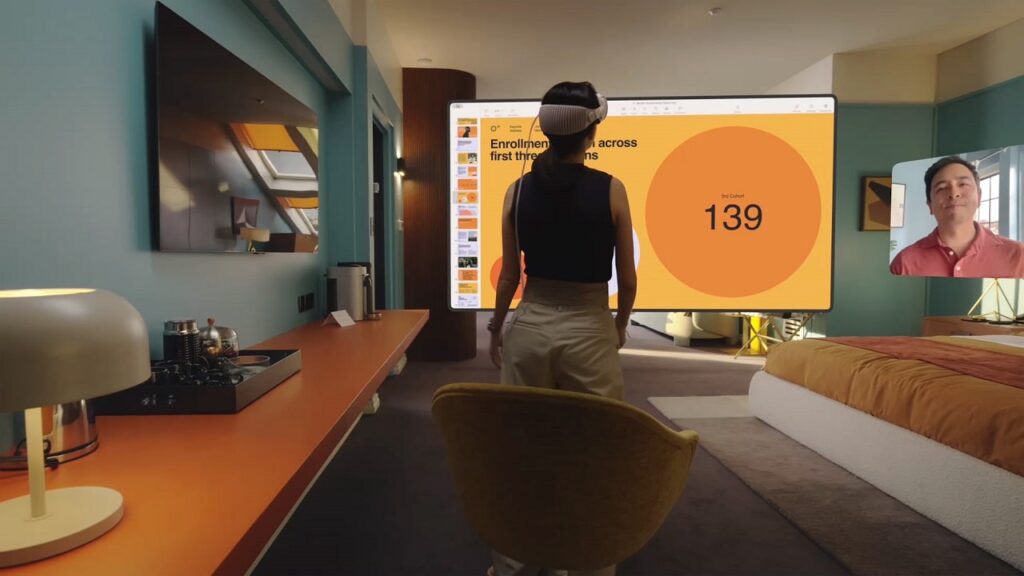Apple Vision Pro will be able to focus on different applications at launch next year, but there will be several gaps on theApp Store dedicated: such as streaming of Netflix. This is because, according to Bloomberg expert Mark Gurman, fewer applications could arrive for the Apple viewer than Cupertino would like.
Apple Vision Pro, some apps (like Netflix) will be missing at launch
In his Bloomberg article, Mark Gurman recalls something that Apple itself has acknowledged time and time again. When Apple launched the iPhone and iPad, third-party developers immediately embraced these devices, resulting in millions of apps. Which led to the success of companies such as Snap and Airbnb, among many, but which contributed to the success of Apple itself. However, the same did not happen for the Apple Watch and Apple TV, whose stores have certainly not had the same success.
The numbers are clear. While the App Store for iPhone, iPad and Mac has approx 130 million monthly active users in the European Union aloneApple Watch and TV stores boast less than 1 million monthly active users in the same region. This leads the developers to aim su iOS and iPadOS invece che tvOS and watchOSfurther widening this gap.
But what will happen to the Apple Vision Pro appwhere it already seems that some big companies (like Netflix) have no intention of developing dedicated apps?
A complicated situation
For Gurman, the issue has several nuances. Developers may initially be reluctant to build apps for Vision Pro, due to the high price of the product and the limited potential user base. Also, the Vision Pros don’t have hand controllers, like those found in other headsets, which could be an additional obstacle in the development of intuitive and engaging applications. Apple has shown that using apps with the eye is really futuristic and intuitive, but it could be difficult for developers to realize. Especially the little ones, who don’t have teams dedicated to AR and VR.

On the other hand, converting existing apps to visionOS format could be relatively painless, thus facilitating the process of adaptation to the new device. This factor could contribute making the Vision Pro app store more successful than the Apple Watch and TV versions.
Apps from other operating systems as well
Apple has announced that the Vision Pro app store will host three different types of apps, not just those visionOS and completely new. While only these apps will be built from the ground up to work in both virtual and augmented reality, taking full advantage of the device’s high-resolution displays and eye controls, they won’t be the only ones.
We will see, in fact, too iPad and iPhone apps unaffected. Which will open as a window within visionOS. All without developers having to make additional changes. This option seems to be the quickest choice for many developers. As it requires less effort and offers the potential to earn new income without having to completely rethink your software. And there will be too app iPad convertite. These apps will run as native apps in visionOS, which requires developers to update the user interface and optimize it for a mixed reality experience.
Doubt for developers
The arrival of Vision Pro promises to offer new opportunities for developers, but also challenges to face. Unmodified apps may not guarantee an optimal user experience who have invested a considerable amount in the new device. Vision Pro users will want specially designed apps to manage the product’s unique interface and take full advantage of its capabilities. Simply launching apps without modifying them could lead to a negative image return.

For the Vision Pro app store to truly thrive, developers will therefore need to make significant changes to their existing apps or invest in creation of new visionOS apps, second Gurman.
Although Apple is expecting to sell about 500,000 units of Vision Pro annually in the first few years, this number represents only a small fraction of other Apple devices, such as iPhone, iPad and Mac, which together reach 250 million units. In other words, given the effort to develop native apps, the economic return may be low at first. Developers who believe in the future of the headset will invest now. But smaller studios might just not have the budget to do it.
To remedy this, apps for Vision Pro are expected to have higher price points. Reaching figures between $50 and $250, especially in the graphic design or productivity categories. Games on the Vision Pro may also cost more, with prices estimated to be between $40 and $60.
Among the Apple Vision Pro apps, Netflix will not be there
To understand the store’s success, we can look to Meta and the success of third-party apps in its VR app store. On Meta Quest, the developers only generated about $1.5 billion in eight years, despite sales of 20 million of viewers.
The massive marketing push from Apple and the subscription app support could incentivize developers. Additionally, Apple has improved the app development process for Vision Pro compared to previous watch and TV platforms.

However, while the headset seems perfect for an immersive multimedia experience, it is among the initial apps on Apple Vision Pro there will be no big streamers like Netflix. Who currently have no plans for a native app, although their iPad apps will work unchanged on the headset. So we will be able to see Netflix series on Apple Vision Pro, though they won’t be designed for the AR interface like those of Apple TV+ and Disney+.
The uncertainty therefore remains. What seems certain is that the Apple viewer will be successful if the number of native apps is sufficient in quality and quantity. Apple knows this, which is why it made it possible to carry without Modify the iOS and iPadOS app. But when fully operational, apps need to be designed with mixed reality in mind.















Leave a Reply
View Comments